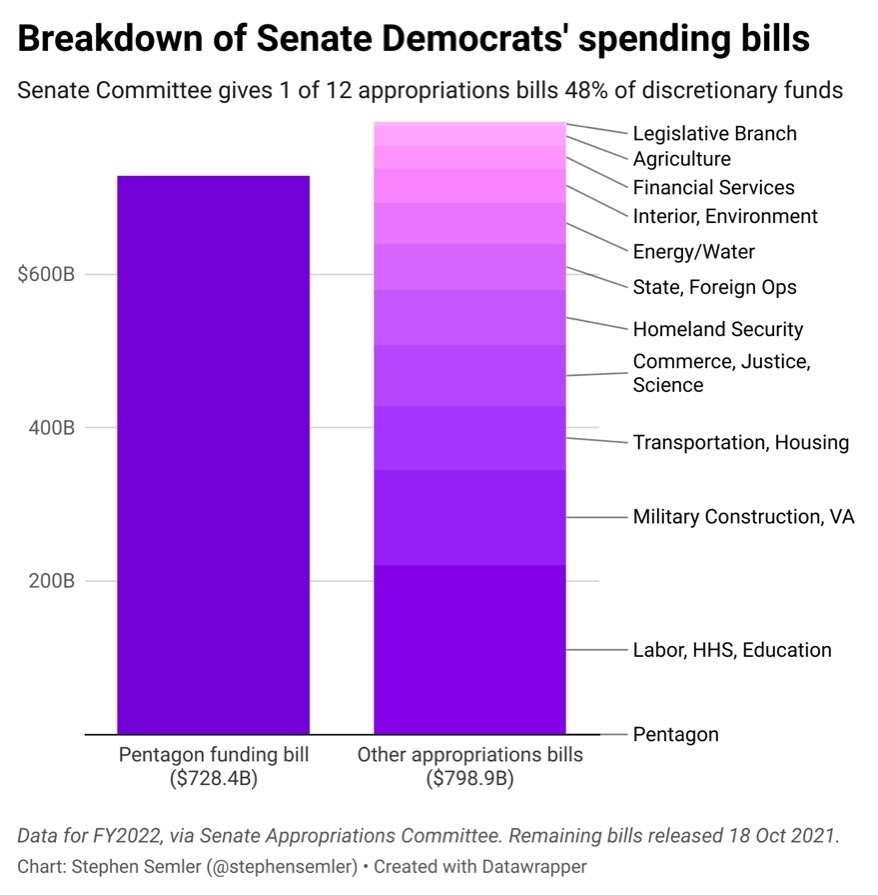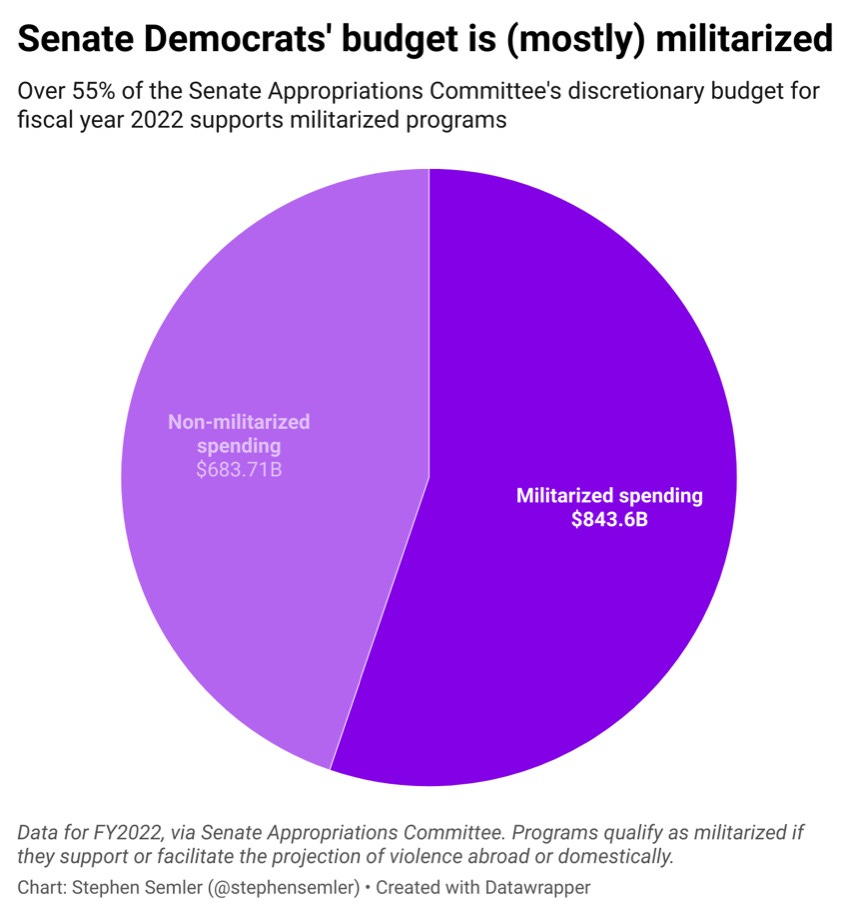Breakdown of how Congress wants to spend public funds in FY2022
Speaking Security Newsletter | Advisory Note for Organizers and Candidates, n°129 | 1 November 2021
If you find these notes useful, you can support this newsletter here and SPRI, here. Sharing these newsletters also helps. Thank you!
Situation
Federal spending is either ‘mandatory’ or ‘discretionary’. Mandatory is made up of the big social spending programs like Medicare and Social Security. This category of spending isn’t reauthorized/reappropriated on a yearly basis—broadly speaking, a law has got to be passed in order for Congress to mess around with it.
Discretionary spending is reauthorized/funded annually, so that’s the federal spending category you look at when trying to gauge congressional priorities and/or morals.
Discretionary spending consists of 12 appropriations bills. The Democrat-led Senate Appropriations Committee released the remaining 9 of 12 spending bills last month and boasted both in the press release and the summary document about the 5% increase for defense- (military-)related programs and the 13% increase for non-military programs for fiscal year 2022.
Given how close Trump got us to parity with respect to military and non-military spending balance, one could argue that that’s moving us in the quote-unquote right direction.
Still, though: Just one of 12 appropriations bills is ‘for’ the Pentagon, but somehow a Democrat-controlled Congress loaded it with just shy of half the money in the discretionary budget for FY2022. This isn’t too far off from what Biden originally proposed in his funding request, so he’s complicit here, too.
Moreover, even though 48% of funds is for the military spending bill proper, there’s well over $100 billion that funds stuff related to militarization (at home or abroad) but are found in other appropriations bills.
To calculate the total ‘militarized budget’ you’ll want to add those programs up (which takes forever and is a total pain in the ass—please consider supporting me/think tank on Patreon, here, thank you) and you should come out with something close to $115.2 billion*—or 55% of the discretionary budget—on top of the $728.4 billion that’s just for the Department of Defense. Does that make sense?
*$115.2 billion is what you get when you add up the military construction portion of the Military Construction/Veterans Affairs bill (I excluded Veterans Affairs funding but could have been talked into including it); the law enforcement components of the Homeland Security bill (so ICE, CBP, etc) and the Commerce/Justice/Science bill (FBI, police grants, etc); nuclear weapons funding from the Energy/Water bill; military aid programs in the State/Foreign Operations bill; and Capitol Police funding from the Legislative Branch bill.
Thanks for your time,
Stephen (@stephensemler; stephen@securityreform.org)
Find this note useful? Please consider becoming a supporter of SPRI. Unlike establishment think tanks, we rely exclusively on small donations.



